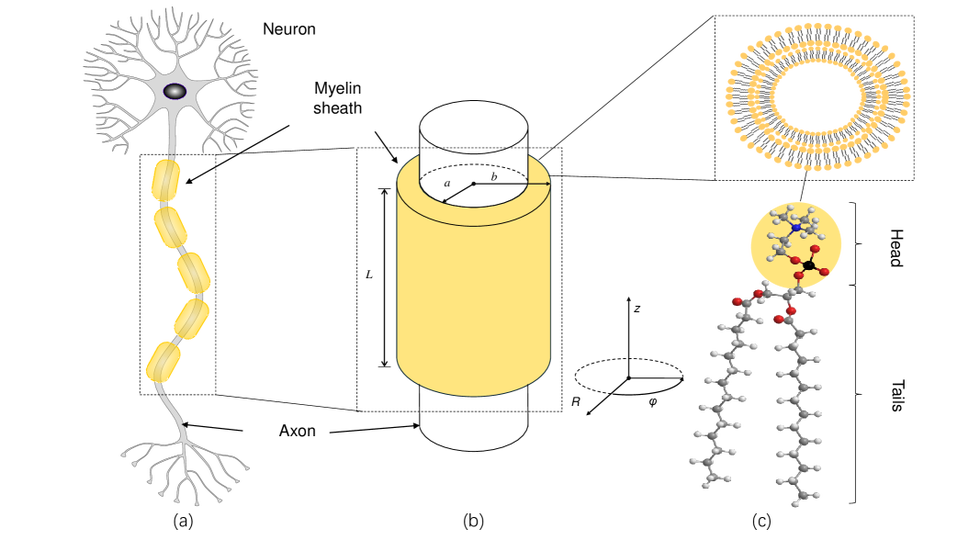미시세계에서 양자역학이 적용된다는건 다들 알고 있었는데, 이걸 거시세계로 연결시키는 시도라 흥미진진; 아직 가설에 불과하지만, 이 시도가 성공한다면 만물을 장(field)으로 설명가능케 하는 양자역학이 아인슈타인 버전의 통일장 이론으로 업그레이드 될 수도
https://www.popularmechanics.com/science/a61854962/quantum-entanglement-consciousness/
Quantum Entanglement in Your Brain Is What Generates Consciousness, Radical Study Suggests
This controversial idea could completely change how we understand the mind.

- For the past 30 years, scientists have investigated whether the human brain might require quantum processes to achieve cognition.
- A new study from Shanghai University uses mathematical models to suggest that certain fatty structures (which sheath the nerve cell’s axon) could potentially produce quantum entangled biphoton pairs, potentially aiding in synchronization across neurons.
- However, scientists have long argued that the brain is too hot and messy for this type of phenomenon to occur, and detecting this phenomenon as it occurs in the brain would be an incredibly difficult task.
It has long been argued that the human brain is similar to a computer. But in reality, that’s selling the brain pretty short. While comparing neurons and transistors is a convenient metaphor (and not completely out of left field), the brain is ultra-efficient, its energy is renewable, and it’s capable of computational feats that even the most advanced computer can’t pull off. In many ways, the inner workings of the human brain make up an unknown computational frontier.
Although your brain is superior to your laptop—or even the world’s most advanced supercomputer—these machines run on classical physics. But there’s another kind of a computer out there: a quantum one.
The idea that the human brain contains quantum properties isn’t new. In fact, the British physicist Roger Penrose and the American anesthesiologist Stuart Hameroff first suggested the controversial concept back in the 90s, with their “orchestrated objective reduction” model of a consciousness. Since then, many pieces of evidence have at least hinted that, while the brain may not be a full-fledged quantum computer, some quantum properties may in fact help generate consciousness.
Now, a new study from Shanghai University submits yet another piece of evidence to the neurological court—that one particular process of the human brain exhibits behavior akin to quantum entanglement, a phenomenon when two particles (usually photons) become inextricably linked even across vast distances. This phenomenon confounded even the most brilliant of minds, including Albert Einstein, who called quantum entanglement “spooky action at a distance.”
The study, published this month in the journal Physics Review E, suggests that a fatty material called myelin that surrounding the nerve cell’s axon—the fiber that transmits electrical impulses to other nerves or body tissues—provides an environment in which the entanglement of photons is possible. This could potentially explain the rise of cognition, and especially synchronization, which is essential for information processing and rapid response.
“Consciousness within the brain hinges on the synchronized activities of millions of neurons, but the mechanism responsible for orchestrating such synchronization remains elusive,” the paper reads. “The results indicate that the cylindrical cavity formed by a myelin sheath can facilitate spontaneous photon emission from the vibrational modes and generate a significant number of entangled photon pairs.”
The team built mathematical models detailing how infrared photons could impact the myelin sheath and impart energy to chemical bonds—specifically, carbon-hydrogen bonds embedded in this fatty tissue. This, in turn, could spur biphoton generation with many pairs exhibiting entanglement, and serve as a type of “quantum communication resource” within the nervous system.
“When a brain is active, millions of neurons fire simultaneously,” Yong-Cong Chen, a co-author of the study, told New Scientist. “If the power of evolution was looking for handy action over a distance, quantum entanglement would be [an] ideal candidate for this role.”
If you’re sensing some “woah, if true” quality to this research, you’re not alone. For one, this phenomenon would need to be seen in a biological setting (likely in the brain of a mouse) before scientists get too excited about the brain’s newfound “quantum communication resource.” And that’s a process that the authors readily admit would be difficult. Additionally, the idea of quantum entanglement playing a role in consciousness isn’t a mainstream one—Hameroff, one the leading minds behind the idea that quantum phenomena could drive aspects of cognition, even told New Scientist months ago that “it was very popular to bash us” after the publication of their consciousness model.
But science is in the business of hypothesis
and rigorous testing to discern the true nature of existence. And, as
history has shown, what once seemed liked “spooky action a distance” can
quickly become the cornerstone of the quantum world.
Darren
lives in Portland, has a cat, and writes/edits about sci-fi and how our
world works. You can find his previous stuff at Gizmodo and Paste if
you look hard enough.




Comments
Post a Comment